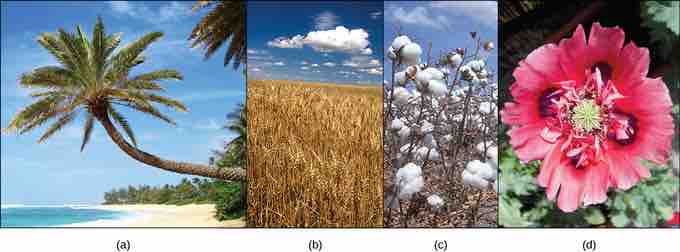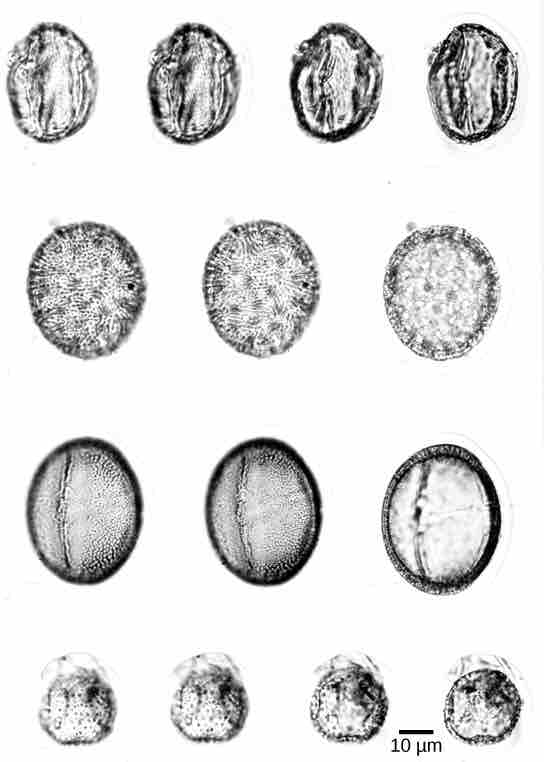Evolution of Seed Plants
The lush palms on tropical shorelines do not depend upon water for the dispersal of their pollen, fertilization, or the survival of the zygote, unlike mosses, liverworts, and ferns of the terrain. Seed plants, such as palms, have broken free from the need to rely on water for their reproductive needs. They play an integral role in all aspects of life on the planet, shaping the physical terrain, influencing the climate, and maintaining life as we know it. For millennia, human societies have depended upon seed plants for nutrition and medicinal compounds; and more recently, for industrial by-products, such as timber and paper, dyes, and textiles. Palms provide materials including rattans, oils, and dates. Wheat is grown to feed both human and animal populations. The fruit of the cotton boll flower is harvested as a boll, with its fibers transformed into clothing or pulp for paper. The showy opium poppy is valued both as an ornamental flower and as a source of potent opiate compounds .

Seed plants dominate the landscape
Seed plants dominate the landscape and play an integral role in human societies. (a) Palm trees grow along the shoreline; (b) wheat is a crop grown in most of the world; (c) the flower of the cotton plant produces fibers that are woven into fabric; (d) the potent alkaloids of the beautiful opium poppy have influenced human life both as a medicinal remedy and as a dangerously-addictive drug.
Seeds and Pollen as an Evolutionary Adaptation to Dry Land
Unlike bryophyte and fern spores (which are haploid cells dependent on moisture for rapid development of gametophytes), seeds contain a diploid embryo that will germinate into a sporophyte. Storage tissue to sustain growth and a protective coat give seeds their superior evolutionary advantage. Several layers of hardened tissue prevent desiccation, freeing reproduction from the need for a constant supply of water. Furthermore, seeds remain in a state of dormancy induced by desiccation and the hormone abscisic acid until conditions for growth become favorable. Whether blown by the wind, floating on water, or carried away by animals, seeds are scattered in an expanding geographic range, thus avoiding competition with the parent plant.
Pollen grains are male gametophytes carried by wind, water, or a pollinator . The whole structure is protected from desiccation and can reach the female organs without dependence on water. Male gametes reach female gametophyte and the egg cell gamete though a pollen tube: an extension of a cell within the pollen grain. The sperm of modern gymnosperms lack flagella, but in cycads and the Gingko, the sperm still possess flagella that allow them to swim down the pollen tube to the female gamete; however, they are enclosed in a pollen grain.

Fossilized pollen grains
This fossilized pollen is from a Buckbean fen core found in Yellowstone National Park, Wyoming. The pollen is magnified 1,054 times.